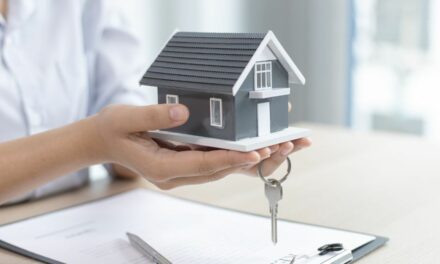In this article, we’ll explore the possibility of using your Self-Invested Personal Pension (SIPP) to finance home improvement projects.
We’ll delve into the process of withdrawing from your pension, the rules governing these withdrawals, tax implications, the advisability of this approach, and the potential need for financial guidance.
Additionally, we’ll highlight various types of home improvements that could be funded through your SIPP.
Can You Withdraw from Your SIPP for Home Improvements?
Yes, it is possible to withdraw money from your Self-Invested Personal Pension (SIPP) to fund home improvements, provided certain conditions are met.
The primary purpose of a SIPP is to provide retirement income, but under some circumstances, you can access these funds prior to retirement.
One way to do so is by taking out up to 25% of your SIPP as a tax-free lump sum after age 55.
This money can then be used to finance renovations, extensions, or other upgrades to your home.
Alternatively, if you’ve already taken your tax-free-cash, you can make a taxable withdrawal from your SIPP. But keep in mind this will be treated as income for that tax year and taxed accordingly.
“It’s always best to speak to a financial adviser that specialises in SIPPs if you’re considering a significant withdrawal – Sam Hodgson, SIPP Specialist at SIPP Advice.
How to Withdraw from Your Pension for Home Improvements
If you want to access your SIPP to fund home renovations, follow these key steps:
- Consult your SIPP provider and a financial advisor – they can assess your specific circumstances and ensure you fully understand the rules, limitations and any tax implications.
- Check you meet the criteria – e.g. being over age 55 for lump sum withdrawals.
- Complete application forms – your provider will specify paperwork needed to release funds.
- Wait for approval – withdrawal applications can take 1-2 weeks to process.
- Transfer SIPP funds – approved amount will be transferred to your nominated personal bank account.
- Pay any tax due – income tax applies on withdrawals beyond your tax-free-cash allowance.
Following this structured process ensures you access your SIPP safely and legally. Get qualified advice to avoid any costly errors or missteps.
Rules and Tax Considerations
There are important rules and tax implications to consider when withdrawing money from your SIPP for home improvements:
- Tax-free lump sums – The first 25% of your SIPP can be taken as a tax-free lump sum after age 55.
- SIPP Drawdown – These are taxed at your marginal income tax rate, so 20%, 40% or 45% depending on your total taxable income. There may be additional tax charges if you sell the property in future at a profit.
- Inheritance tax – SIPP funds withdrawn for home improvements may become liable for inheritance tax on your estate. Take professional advice on mitigating this.
- Scams – Be vigilant for fraudulent schemes misusing pension liberation rules. Only use reputable regulated SIPP providers.
Remember to consult a qualified advisor to understand the rules and minimise tax. HMRC penalties can apply for incorrect SIPP withdrawals.
Is Using Your SIPP for Home Improvements a Good Idea?
Using your SIPP to fund home renovations or improvements may seem appealing, but it has risks and downsides to evaluate:
Potential advantages include accessing substantial tax-free funds and avoiding repayment loans. Done correctly, it can be a convenient financing option.
However, reducing your pension pot prior to retirement has massive long-term impacts. It chips away at your retirement income, leaves you reliant on other assets, and reduces your financial security later in life.
Having accessible pension funds can also lead to temptation and poor spending decisions. Financing luxury upgrades over essential works undermines retirement finances.
Alternatives like personal savings, loans and mortgages may be preferable as they don’t diminish your retirement safety net.
Overall, get professional financial advice to make sure you’re going about it in the right way.
Do You Need Financial Advice?
Withdrawing money from your SIPP for home improvements is not a straightforward decision.
The rules and tax implications are complex, and the long-term impacts on your retirement finances need careful evaluation.
Making mistakes with SIPP withdrawals can be extremely costly. From excessive tax charges and fines to running out of retirement income, the risks are substantial.
Seeking professional financial advice is strongly recommended before accessing your pension for any purpose. Financial advisors help you:
- Understand the detailed SIPP withdrawal rules and tax consequences.
- Weigh up alternatives like loans or equity release.
- Ensure your overall financial plan supports retirement.
- Avoid breaching annual/lifetime allowances or falling foul of scams.
- Manage investments appropriately after withdrawals to sustain your pension pot.
Choose an independent financial advisor with specific pension qualifications.
An advisor acts solely in your interests, not those of product providers. Obtaining personalised expert guidance gives you confidence in making informed SIPP decisions.
The modest upfront cost of advice can prevent hugely expensive long-term mistakes. So get professional support when considering using your pension for home improvements.
Types of Home Improvements You Can Fund Using Your SIPP
If you decide to proceed with using your SIPP for home improvements, here are some projects you could fund:
- Property extensions – Adding a conservatory, loft conversion or side extension can enhance living space.
- Kitchen and bathroom upgrades – Installation of new suites and amenities improves functionality.
- Electrical rewiring – Upgrading outdated systems enhances safety and supports redecorating.
- Insulation and double glazing – Improving energy efficiency reduces bills.
- Garden landscaping – Building patios, paths and features creates recreational space.
- Roof repairs – Replacing worn roofs rectifies damage and prevents leaks.
- Drainage and damp works – Fixes structural issues and prevents deterioration.
- Accessibility upgrades – Improves mobility for elderly or disabled occupants through adaptations.
- Security enhancements – Installation of CCTV, alarms and locks deters crime.
Doing renovations that add value or make a property more comfortable to live in can be wise investments. Just be sure to focus on essential works rather than unnecessarily extravagant projects.











